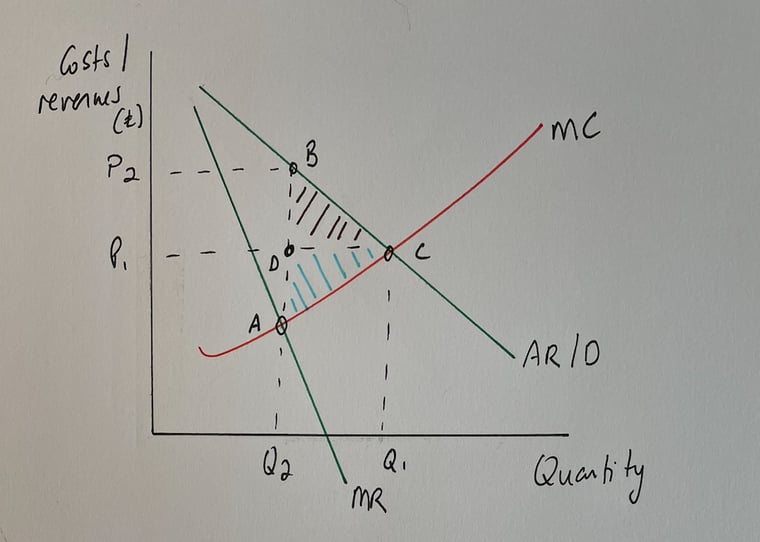Consumer & Producer Surplus
- Market efficiency and welfare losses in market structures can be considered through the concepts of consumer and producer surplus
- Consumer surplus is the difference between the amount the consumer is willing to pay for a product and the price they have actually paid
- E.g. If a consumer is willing to pay £18 to watch a movie and the price is £15, their consumer surplus is £3
- E.g. If a consumer is willing to pay £18 to watch a movie and the price is £15, their consumer surplus is £3
- Producer surplus is the difference between the amount that the producer is willing to sell a product for and the price they actually do
- E.g. If a producer is willing to sell a laptop for £450 and the price is £595, their producer surplus is £145
Diagram: Consumer and Producer Surplus

Consumer surplus lies below the demand curve and producer surplus lies above the supply curve
Diagram analysis
- The area between the equilibrium price and the demand curve represents the consumer surplus in the market (ABPe)
- The consumer surplus lies underneath the demand curve
- The consumer surplus lies underneath the demand curve
- The area between the equilibrium price and the supply curve represents the producer surplus in the market (CBPe)
- Producer surplus lies above the supply curve
- Producer surplus lies above the supply curve
- When the market is at equilibrium, producer and consumer surplus are maximised
- Consumer surplus + producer surplus = social/community surplus
- Any disequilibrium reduces the social surplus



